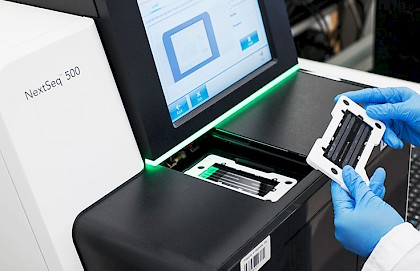Understanding the role of mutations of the cohesin gene family in AML and MDS
This month we will look at the work being done by one of our PhD students James Smith. Two PhD studentships were awarded in 2014 as part of the charities Golden Anniversary grant. Working with Queens University Belfast we recognise the importance of funding graduate positions and creating a positive training environment for the blood cancer experts of the future.
One of these students, James, is working along with Professor Ken Mills on a project focused on understanding the role of mutations of the cohesin gene family in Acute Myeloid Leukaemia (AML) and Myelodysplastic Syndromes (MDS), with the aim of developing treatments that can be translated into the clinic.
Approximately 20% of patients with either AML or MDS have mutations in this cohesin complex. The complex is thought to help hold DNA in place and move it around inside the nucleus to only activate the required genes for these cell types. The mutations alter this function resulting in genes that should not be active, to activate and causing problems inside the cell.
Once the area with the mutation has been identified, it needs to be investigated further. To do this, James made artificial cell models using a protein called CRISPR/cas9, this fluorescent tagged protein can introduce the type of mutation seen in patients into cells for use in the lab. Doing this allows James to see the molecular differences between the cells that have the mutation and those that don’t
In order to further understand the effect this mutation has on DNA and chromatin, James used Next Generation Sequencing to explore how the DNA was connected and consequences of the mutations. This task is completed using an Illumina Next Seq 500, an instrument capable of reading the sequence of hundreds of millions of DNA pieces. James binds DNA molecules onto a microchip, one with millions of tiny pockets, each one big enough for only one DNA molecule. This chip goes into the machine along with enzymes. Then, the chip is washed sequentially with coloured DNA letters, each one only lights up as it slots into place on each DNA molecule. A computer can read this huge array of coloured dots and track the DNA sequences of each of millions of pockets on the chip. This automated process can read huge amounts of data in a short time but all of that information needs to be analysed and interpreted which is very time consuming.
The next step is using the same drug screening approach that we mentioned in a previous blog featuring Dr Kyle Matchett. A large number of drugs already available on the market will be screened for their effect on the mutated cells. The hope is that we can find a drug that targets this fraction of patients as they appear to have a worse outcome than those with other types of MDS/AML.
Any questions on the project or anything else we are working on please do not hesitate to get in touch.






